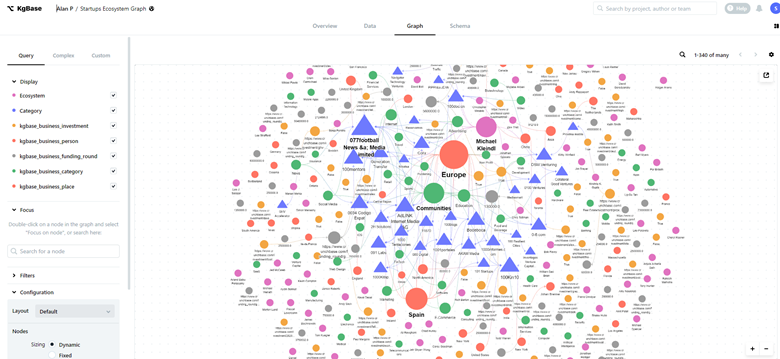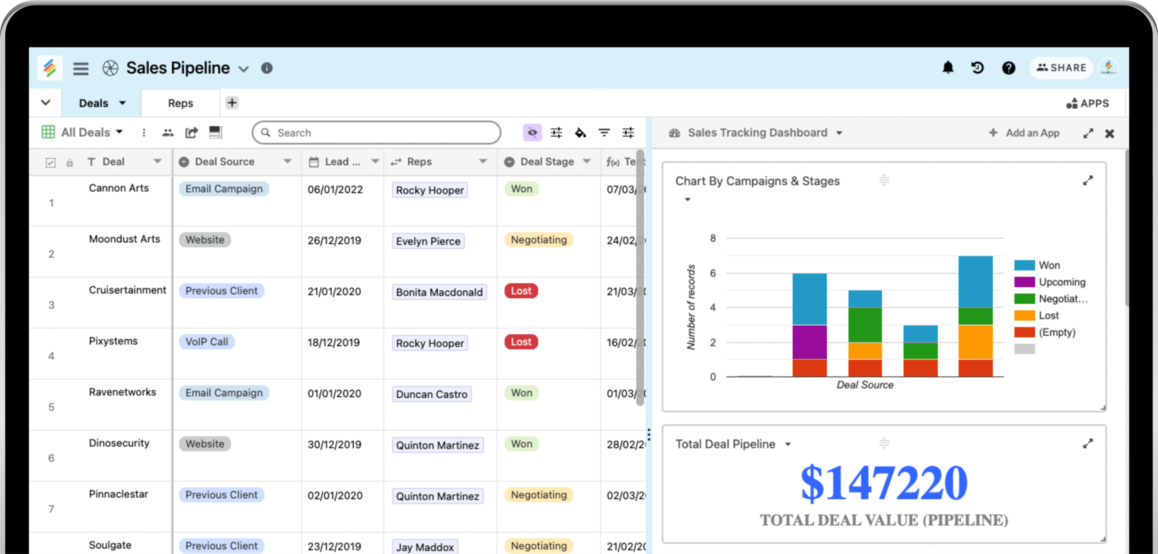Just How No-Code Tools Simplify Open Platform Database Development for Every Person
Wiki Article
Exploring the Benefits of Scalable Databases That Call For No Coding Skills for Efficient Information Monitoring Solutions
The appearance of scalable data sources that eliminate the need for coding skills offers a transformative chance for companies seeking efficient information monitoring solutions. By making it possible for non-technical users to harness the power of information through user-friendly interfaces, these systems improve accessibility and foster partnership across diverse teams. Their cost-effectiveness and adaptability to progressing business requirements can significantly enhance functional processes. As we think about the effects of such advancements, it ends up being crucial to analyze just how they can reshape the landscape of data monitoring and drive sustainable growth in an affordable setting.Boosted Accessibility for Individuals
Improved availability for individuals is a critical aspect of scalable databases, ensuring that information management systems are user-friendly and intuitive. In an era where data-driven choices are critical, accessibility allows a wider variety of customers, consisting of those without considerable technological knowledge, to engage with database systems efficiently. This democratization of data accessibility facilitates boosted partnership across departments, encouraging employees to extract insights and make informed decisions.Straightforward user interfaces, such as visual information and drag-and-drop functions depiction, simplify intricate information interactions. These enhancements lower the understanding contour associated with traditional database monitoring, enabling individuals to concentrate on leveraging information rather than facing technical intricacies. Additionally, scalable databases usually integrate personalized dashboards and real-time analytics, giving users with prompt insights customized to their specific requirements.

Cost-Effectiveness and Source Financial Savings
Efficient information administration not only pivots on availability but likewise on cost-effectiveness and resource cost savings. Scalable databases made for individuals with no coding abilities considerably lower monetary burdens commonly connected with traditional data source management systems. By getting rid of the need for specialized programs knowledge, companies can assign their sources more successfully, focusing funds on core organization activities rather than extensive training or employing skilled workers.Moreover, these databases commonly utilize cloud-based options, which better decrease costs associated with equipment and maintenance. Organizations can scale their data source remedies according to their needs, preventing the expenditures sustained from over-provisioning resources. This versatility indicates businesses can adapt to transforming needs without incurring unnecessary costs, causing significant lasting savings.
Additionally, easy to use interfaces enhance information entry and administration processes, minimizing the moment invested in management jobs. This performance converts right into labor price savings, enabling teams to concentrate on calculated campaigns instead of regular upkeep. Overall, adopting scalable databases that require no coding skills fosters a more affordable method to data management, enabling companies to optimize their sources while preserving high levels of operational efficiency.
Improved Cooperation Throughout Teams

Additionally, scalable data sources facilitate seamless communication amongst staff member. With user-friendly interfaces that call for no coding abilities, employees can easily produce, customize, and share records or control panels customized to their details needs. This democratization of data equips non-technical users to contribute insights, improving the joint setting.
In addition, these data sources sustain simultaneous accessibility, permitting several customers to service the same dataset at the same time. This feature enhances productivity, as teams can take part in joint information evaluation without the threat of variation control concerns. The capacity to leave notes or remarks straight within the data source better advertises discussion and clears up data interpretations.
Streamlined Data Management Processes
In today's data-driven environment, organizations identify the need of structured data administration refines to make pop over to this site best use of performance and precision. By leveraging scalable databases that require no coding abilities, organizations can streamline their data handling and decrease the intricacies generally linked with traditional data source systems. This ease of access empowers non-technical customers to engage directly with information, assisting in quicker decision-making and decreasing dependence on specialized IT workers.Streamlined information monitoring procedures improve workflow by automating regular tasks such as check this data entrance, validation, and coverage. Automated data assimilation makes sure that information from numerous sources is accumulated perfectly, eliminating silos and promoting a combined sight of important business metrics (no-code). In addition, easy to use user interfaces enable employees to control data quickly, allowing them to produce understandings that drive tactical campaigns without the need for considerable training.
This effectiveness not just accelerates functional procedures but likewise decreases the capacity for human error, making certain that information stays precise and dependable. Eventually, structured information monitoring procedures via scalable databases result in improved efficiency, permitting companies to focus on core activities while guaranteeing that their data administration techniques are reliable and reliable.
Scalability for Expanding Organizations

For broadening enterprises, the ability to scale up or down is crucial. A scalable data source can take care of an increase of data generated from brand-new clients, products, or services, making certain that organization operations remain uninterrupted. In addition, these data sources offer the ability to handle peak loads successfully, which is necessary during durations of fast growth or seasonal spikes.
In addition, numerous scalable database options are developed with straightforward interfaces that call for no coding skills, empowering non-technical personnel to manage information efficiently (no-code). This democratization of data monitoring permits organizations to allocate resources purposefully and reduce reliance on specialized IT personnel
Ultimately, taking on a scalable database not only boosts functional efficiency however additionally cultivates a setting where organizations can introduce and advance without the restraints of standard data source systems. This adaptability settings companies for long-term success in today's competitive landscape.
Final Thought
In verdict, scalable data sources that require no coding skills supply substantial advantages for effective information monitoring. These systems boost ease of access for non-technical customers, reduce operational costs, and promote partnership throughout teams. By enhancing data monitoring procedures and supplying scalability for expanding businesses, such services allow companies to adjust to altering needs properly. Inevitably, the fostering of these straightforward databases fosters advancement and settings services for long-lasting success in a vibrant atmosphere.Enhanced ease of access for users is a crucial aspect of scalable data sources, making certain that information administration systems are user-friendly and user-friendly.Easy to use interfaces, such as drag-and-drop features and aesthetic click here for more info data representation, streamline complicated data communications. Generally, taking on scalable data sources that require no coding abilities promotes a more cost-efficient method to data administration, enabling companies to maximize their sources while preserving high degrees of operational efficiency.
By leveraging scalable data sources that need no coding skills, organizations can simplify their information handling and decrease the intricacies usually linked with standard data source systems - no-code.Structured information administration procedures improve operations by automating routine jobs such as data entrance, recognition, and reporting
Report this wiki page